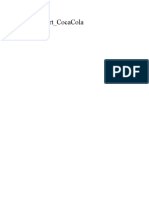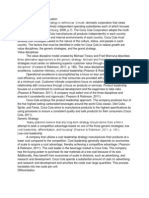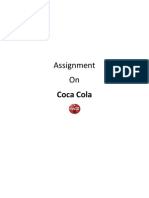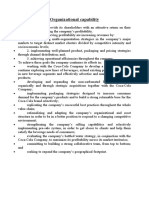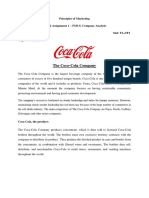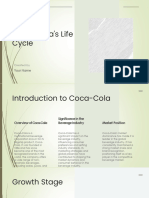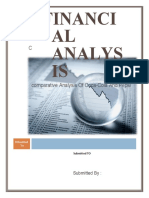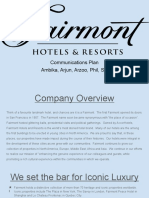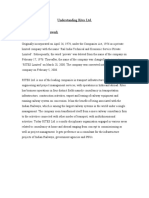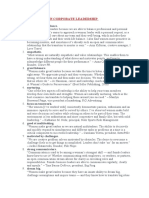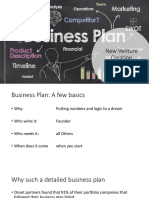Summary
During 2011 Coca-Cola embarked on a critical period when it needed a new business strategy that would help it adapt to industry
transformations. The company acquired all shares of Coca-Cola Enterprises (CCE) within North America to establish direct ownership of
its largest bottling operation. Coca-Cola implemented this strategic move to represent a major shift away from its established century-old
franchise system which defined its business practices throughout history. CEO Muhtar Kent represents that direct company ownership
over bottling operations would lead to supply chain simplification and manufacturing system enhancements alongside better market
response capabilities.
The company needs to determine whether complete North American bottling facility ownership provides its maximum benefit, or it
should rebuild franchise relations or employ mixed ownership where manufacturing control stays under the company's purview while
distribution tasks fall elsewhere. Through his role as the lead decision maker Muhtar Kent executed this transformation for the company
at an individual level. Kent's strong leadership skills accompanied by his worldwide operational experience gave him the ability to
develop strategic thinking and drive non-stop relationship-building across markets. Under Kent's leadership Coca-Cola successfully
maintained direction through its difficulties with declining soda popularity and changing market patterns. While his world-view
leadership and aggressive expansion strategies worked well during his time in office some critics doubted that vertical integration could
be sustainable over the long term. His primary goal concentrated on creating a sustainable North American Coca-Cola framework that
would maintain financial prosperity and industry leadership position.
The primary responsibility of Coca-Cola as an organization lay in revitalizing people across the world through their various beverage
offerings while maintaining solid financial results. The company had multiple strengths like established a highly valuable global brand
thanks to its dedicated work on marketing combined with distribution and product innovation. In addition to its powerful distribution
network and solid brand positioning and loyal customer base there were clear weaknesses existing within the company. The established
franchise bottling program proved inefficient because it created bottling operations which showed resistance to fund innovative
advancements. The lack of pricing and marketing strategy control by Coca-Cola often triggered conflicts between the company and its
independent bottling partners. The CCE acquisition aimed to recover lost control and operational partnership strength yet made Coca-
Cola more vulnerable to bottling investment costs and commodity market fluctuations.
The beverage industry was experiencing significant industry trend shifts at that point. The decades of successful CSD market
performance by Coca-Cola faced significant threats because customers moved toward health-oriented bottled water and tea and energy
drink choices. The industry demanded companies to excel in brand image preservation and distribution network optimization and
product creation and regulatory dish compliance capabilities. The United States market alongside other primary regions demonstrated
reduced soda intake patterns yet medium-term aspects highlighted consumer preferences for sustainable beverages plus digital marketing
campaigns which directly targeted end users. The existing trends in the market demanded new changes from Coca-Cola which led the
company to expand its brand collection by purchasing vitaminwater and Honest Tea, but they required a flexible business system to stay
competitive.
Coca-Cola encountered multiple opportunities and barriers to success when operating throughout the worldwide market. The global
environment offered developmental opportunities in emerging markets since increasing incomes and urbanization patterns boosted
beverage consumption dynamics. The prospective markets came with multiple risks that included financial instability as well as
regulatory control issues and delivery chain disturbances. Rising concerns about obesity together with sugar consumption prompted
government bodies to apply soda taxes and implement tighter advertisement regulations in various countries. The company faced
expanded complexity because of sustainability concerns which led to investment allocation for water preservation together with
packaging that minimized environmental impact. Going forward Coca-Cola needed to find a sustainable balance between making profits
and taking responsibility for their corporate social practices to protect their worldwide business standing.
Coca-Cola established three different strategic directions for development which included controlling entire bottling operations, handing
bottles back to franchise holders or maintaining partial ownership while keeping bottling operations. companies that kept bottling under
direct control gained advantages in logistics management as well as product pricing stability and stronger coordination of sales
promotion activities. Higher capital expenditures alongside increased costs for raw materials emerged as negative effects of this choice.
The second path toward refranchising would let Coca-Cola recover its decentralized business structure by distributing bottling operations
to local partners while minimizing financial exposure. The implementation of brand consistency and innovation speed becomes
problematic when resorting to this methodology. The hybrid model enabled Coca-Cola to produce control production quality while
benefiting from market knowledge of local distributors through a distribution outsourcing approach.
Ultimately, Coca-Cola’s future depended on striking the right balance between control and flexibility. The company needed to optimize
its North American operations while continuing to expand in high-growth markets globally. Digital transformation, sustainability
initiatives, and further diversification into non-carbonated beverages would be crucial in maintaining Coca-Cola’s leadership. As Muhtar
Kent and his team evaluated their next steps, they faced a pivotal question: How could Coca-Cola evolve its business model to thrive in a
rapidly changing beverage industry while staying true to its legacy of refreshing the world?
�What enabled Coca-Cola to maintain a competitive edge over its rivals?
Coca-Cola’s competitive edge depended on their powerful brand recognition along with their wide marketing channels and their proven
promotional strategy. Throughout decades the company utilized active advertising campaigns and purposeful sponsorships to create a
global brand which proved highly recognizable worldwide. Widespread brand devotion-maintained Coca-Cola as the market-leading
beverage company. The distribution operations of Coca-Cola represented a system with no equal. The franchised bottling system of
Coca-Cola created deep customer reach nationwide and worldwide enabling product delivery to inaccessible locations. The company's
relationships with retailers served as a major advantage because Coca-Cola maintained close working ties with large supermarket chains
and convenience stores to optimize their shelf positions. The company strengthened its supply chain through its ability to provide
financial sponsors along with marketing support to its bottling network. The effective line of Coca-Cola products acted as another critical
element in its success. The company-maintained soda as its core product but diversified further into juice beverages and bottled water
and sports drink categories to adapt to changing customers' tastes. Through acquisitions of Minute Maid and vitaminwater Coca-Cola
strengthened its competitive position against PepsiCo by gaining better control over non-carbonated beverages.
What challenges does the company face and are they threatening?
In 2011 Coca-Cola encountered multiple important obstacles which threaten its future sustainability. The essential concern was the soft
drink volume reduction primarily in North America because people paid more attention to their health and obesity rates. The political
environment showed growing restrictions through stricter regulations and sugar taxes alongside shifting consumer demand toward
bottled water and plant-based drinks and tea-type beverages. The company faced severe consequences by failing to adapt because
younger generations would cease to find Coca-Cola relevant. The main obstacle arose from increased commodity prices. The rising costs
of key materials such as sugar and aluminum used in cans and plastic employed in bottling yet caused Coca-Cola to experience reduced
profit. Operations costs increased for Coca-Cola due to environmental demands for sustainable packaging along with water conservation
initiatives and rising prices of plastic waste disposal and water usage. Growing retailer power presented itself as a major challenge for
Coca-Cola. The massive retailers Walmart and Costco started requiring lower prices along with better contract terms thus making Coca-
Cola negotiate from a position of weakness. PepsiCo gained success against Coca-Cola because they expanded their operations into
snacks which enabled cross-promotion and stable revenue growth unlike their competitor. Although facing these problems resulted in
serious obstacles the core existence of the business was not put at stake. Coca-Cola had sufficient brand power and financial capabilities
which allowed it to shift toward healthy beverage products and sustainability initiatives and consumer behaviour enactment. The gradual
loss of dominance will occur if the company fails to solve its current challenges in a timely manner.
Was Coca-Cola right in acquiring CCE? Explain why or why not.
Coca-Cola’s decision to acquire Coca-Cola Enterprises (CCE) in 2010 was a strategic move aimed at regaining control over its North
American operations. The acquisition made sense in the short term because it allowed Coca-Cola to streamline operations, improve
distribution efficiency, and better align its bottling network with corporate objectives. By taking direct control, the company could
accelerate innovation in non-carbonated beverages, optimize pricing strategies, and eliminate inefficiencies that arose from dealing with
independent bottlers.
However, there were also drawbacks. Owning bottling operations meant Coca-Cola was taking on a more capital-intensive business,
increasing its exposure to costs related to labor, transportation, and manufacturing. This was a departure from its historically asset-light
model, which had allowed it to focus on branding and marketing.
While the acquisition was beneficial in fixing the fragmented U.S. bottling system, it was likely not a permanent solution. The long-term
goal seemed to be restructuring and then refranchising the bottling operations once Coca-Cola had optimized them. If the company held
onto bottling for too long, it could struggle with cost inefficiencies, but if it refranchised too quickly, it risked repeating past mistakes
with misaligned bottlers.
Overall, the acquisition was the right move at the time, as it gave Coca-Cola the control it needed to execute a more cohesive strategy in
North America. However, whether it remained the right move in the long run depended on how effectively the company transitioned
back to an optimized franchise model while maintaining operational improvements.
Submitted By
Rutvik Keche
10261353

